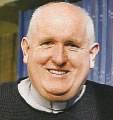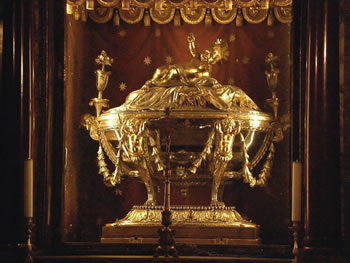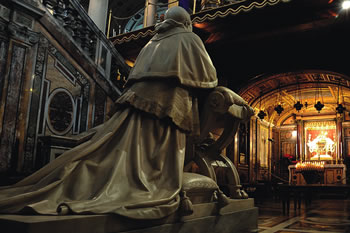The Liturgy of Christmas
The Liturgy of Christmas In the year of Our Lord 2014 on 25 December at Midnight Mass we will celebrate the birth of Jesus. How historical is the liturgy in its counting of the years, its choice of day, and the hour? What has shaped our Christmas liturgies?
The calendar in common use throughout the world counts the years from Anno Domini 1 – the year of the Lord, which leads us to think that Jesus was born in that year (there wasn’t a year zero, the year before 1 AD was 1 BC). The numbering was worked out about the year 500 by a monk who came to Rome from the Balkans called Dionysius Exiguus (Denis the Short) and was subsequently popularized by St Bede, the English historian. Dionysius was wrong in his calculations, since we now know that Herod the Great died in 4 BC. Herod was the king who attempted to kill Jesus by ordering the “massacre of all the boys in Bethlehem and its vicinity two years old and under” (Matt 3:16). That implies that Jesus was born about 7 or 6 BC for Herod to still be alive to order the killing of the innocents a couple of years later. This gives us the odd result that we do not know precisely what year Jesus was born but it was certainly BC – before Christ!
We also do not know the day of the year on which Jesus was born. Luke tells us that “there were shepherds living in the fields, keeping watch over their flock by night” which makes it unlikely to have been during December - wintertime in Israel. So why do we celebrate the feast of Christmas as we do? It is worth noting that celebrations of birthdays are not necessarily connected to the actual date of the birth – Elizabeth II was born on 21 April but we celebrate Queen’s Birthday on the first Monday of June.
Christians were celebrating the death and resurrection of Jesus long before they began to celebrate his birth. Gathering on the ‘day of the Lord’ – Sunday – to commemorate the saving events by celebrating the Lord’s Supper is reported in the New Testament. Within a century, the annual feast of Easter was in place. A homily attributed to Bishop Melito of Sardis from about 150 AD describes the Easter celebration as well-established.
Not everyone thought that Christmas was a good idea. The great biblical scholar of Alexandria, Origen (c.185-c.254), opposed the idea, pointing out that in the scriptures only pagans like Pharaoh or sinners like king Herod Antipas celebrated their birthdays. Herod’s birthday party caused the death of John the Baptist, so Christians should not celebrate their own birthdays let alone that of the Lord!
Despite the influence of Origen, by the fourth century the Eastern Church was celebrating a feast of the birth of Jesus, on January 6. The Western Church celebrated the birth on 25 December.
There are several theories about the origin of both dates – they may have been influenced by symbolic arguments about the days of Creation, by the presence of pagan feasts, or by theories that the perfect life ended on precisely the day it began. The two feasts competed in the Church until the sixth century when Rome’s date won out as the Nativity. January 6 then became the celebration of Epiphany, the showing of the Christ to the Magi.
The traditional hour of Christ’s birth is based on an interpretation of an Old Testament text. The Book of Wisdom has these beautiful verses about the Word of God: “For while gentle silence enveloped all things, and night in its swift course was now half gone, your all-powerful word leaped from heaven, from the royal throne, into the midst of the land that was doomed, a stern warrior” (Wisdom 18:14-15) Reading that text as prophetic, and taking “night half gone” literally, gives Midnight as the time of the birth of Jesus, the Word of God. In the fifth century the Christians at Jerusalem were celebrating a Mass during the night of January 5 at Bethlehem, in the church erected over the cave in which Jesus was reputed to have been born. Western pilgrims spread the practice and in the mid-fifth century a midnight mass was being celebrated in Rome, not in St Peter’s but in the then new basilica of St Mary Majors. The major relic present in that church today is pieces of wood from the manger of the Christ-child. This mass, celebrating the moment of the birth, was called “Christ’s mass” and that is the origin of our word “Christmas”.
There was a period of fasting for Catechumens before Easter in preparation for their baptism, which is the origin of Lent. Similarly there were Catechumens being baptized on January 6, a day which was also connected with the Baptism of Jesus. This seems to be the origin of the preparation period before the Nativity which developed into Advent. At the end of the sixth century, Pope Gregory I instituted the special masses for the four Sundays of Advent. Because there was fasting during Advent the third Sunday was named “Rejoice” (Gaudete Sunday) because the fasting was coming to a close. The fast lasted until the first mass of Christmas and that was another reason why the midnight mass became so popular!
Since Luke 2:21 has Jesus being circumcised “after eight days” churches in Spain and France celebrated the feast of the Circumcision of the Lord ‘eight days’ after Christmas (by inclusive counting this works out as January 1). That was not accepted by Rome until the thirteenth century, but when it was, it became a universal feast in the Church. In 1969 the feast of the Circumcision was replaced by the Solemnity of Mary, Mother of God, which was the restoration of a very early Roman celebration. Those engaged in Jewish-Catholic dialogue were upset at the loss of the only event in the Church calendar which emphasized the Jewishness of Jesus. The eight days from Christmas to January 1 are celebrated as the ‘octave’ of Christmas, with the prayers of the liturgy repeating much that was used on Christmas day itself.
In short, the liturgy of Christmas has developed over centuries, sometimes in a quite obscure fashion, always struggling to proclaim the “glad tidings of great joy” (Luke 2:10).




 Entries(RSS)
Entries(RSS)